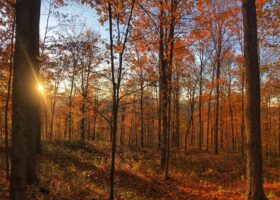
Field Guide to October 2024
The month of October reminds us of the cyclical nature of life. Like spring, autumn is a season of change. The forested hills fade from summer emerald to a watercolor painting of red and gold and brown. Here’s your field guide to some moments that you might not otherwise notice during these few precious weeks that feature colored hills beneath a deep blue sky.
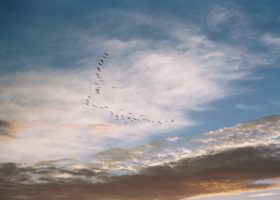
Field Guide to September 2024
It can happen almost anywhere. On a cool, foggy morning, for example, when fall warblers drop from their nocturnal, migratory flights into your backyard, and clusters of Common Green Darners congregate on a nearby riverbank. Or along a mudflat some afternoon when you notice a Spotted Sandpiper teetering and then darting after prey. Or on some wooded trail when you spot the first ruby red leaves among late-summer’s faded green. Here is your field guide to life slowing down and on the move in September.
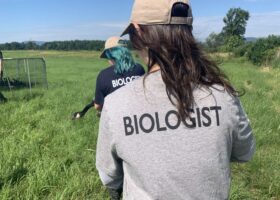
Weekly Reflections from a Summer at VCE
Working with VCE this summer has been immensely rewarding, seeing the animals I love in person and seeing how environmental disturbance affects them in real life. Birds hold a special place in my heart (I have a somewhat unattainable goal of seeing every species in North America before I die), and I’m proud to say I added 42 new birds to my Life List this summer.
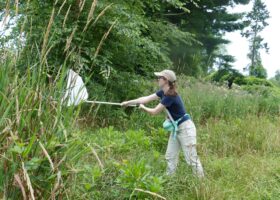
Smith Richardson Wildlife Preserve Visit
VCE has been busy this summer! In addition to asking cutting-edge ecological questions, we are also helping colleagues tackle their conservation problems. This summer, VCE conservation scientist Dr. Desiree Narango and the rest of the technician team have been helping Connecticut Audubon with a key wildlife preserve in Westport, Connecticut.
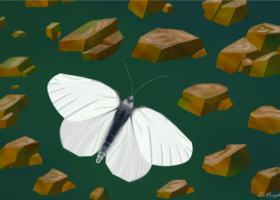
Searching for Butterflies: The West Virginia White
As VCE’s Spatial Science Intern, I spent my summer working with community science observations from several platforms, such as eButterfly and iNaturalist, to create a species distribution model for the West Virginia White in the state. This model incorporated bioclimatic variables and host-plant distributions to reveal areas within Vermont that may be suitable for these butterflies today and into the future.
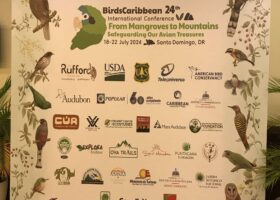
24th BirdsCaribbean International Conference: Conversations and Celebrations
Last month, two VCE scientists and our Executive Director Emeritus spent over a week in the Dominican Republic for the 24th BirdsCaribbean International conference. While there, they packed their schedules, sharing ideas with colleagues, listening to fascinating discussions, leading workshops, and—in Chris Rimmer’s case—giving a keynote and receiving the Lifetime Achievement Award.
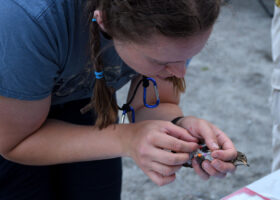
Mount Mansfield 2024 Midseason Report
With six trips up to Mount Mansfield’s peak and five trips to Mount Washington under our belts, VCE’s banding team is well into our summer 2024 montane bird banding and monitoring efforts! Battling rain, wind, chill, and scorching heat has been the baseline for this summer, but although perfect weather has been elusive, the birds we seek have not.
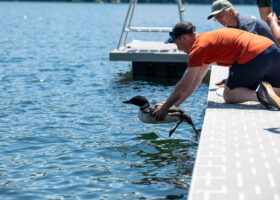
Lead Poisoning and a Love Triangle: A Tale of One Common Loon’s Brush with Death
Nothing prepares you for your first close encounter with an injured loon. Thanks to countless individuals, this loon’s tale has a happy ending. However, its journey touched many, demonstrating that conservation on all scales requires a village of curious, passionate people.
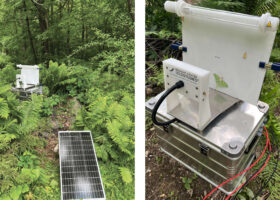
Building an Automated Moth Monitoring Network
How are moth populations faring in Vermont? Except for a few species, no one really knows. A few years ago, VAL teamed up with community scientists, biologists, engineers, and computer scientists from around the world to change that. Now, we are poised to understand moths like never before.
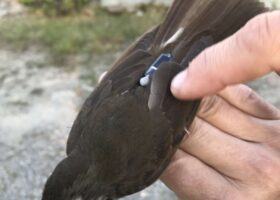
The Next Generation of Mt. Mansfield Ridgeline Research at VCE
With all the buzz on bees and other pollinators lately, you may be wondering if VCE is still studying birds. Are we ever! Amongst the plethora of continuing and new research, our Bicknell’s Thrush research program is going strong and has expanded to explore additional questions and build on past discoveries.
